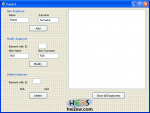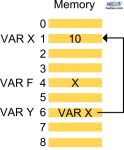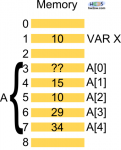
Suppose you have to archive some documents in a public bureau, one for every person you serve.
You fill all data, assign an identifier, and collect papers together; all is ready to be filed.
Every time you need to see these documents, the identifier shall make you find them quickly.
We know archive can be a computer file: indeed the paper scheme is well represented by bureaucratic organizer softwares, among which the most important are database managers.
Independently by the way you adopt, this matter always belongs to data's and memory's representation and management.
Talking about programming we have now a basic but enough knowledge to realize a simple manager.
What we're going to realize is a collection of records, describing hypothetical employees with just three features: name, surname and ID number.
Only records to be archived: so array is perfect.
Let's see how to deal with it and its items: in this article data will be passed by value. ...continue reading "Array management by value"



